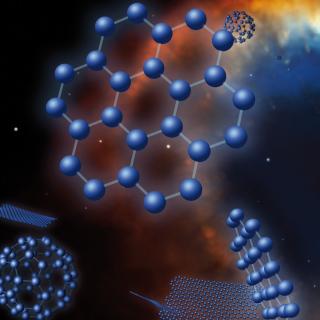Bibcode
Masseron, Thomas; García-Hernández, D. A.; Santoveña, Raúl; Manchado, Arturo; Zamora, Olga; Manteiga, Minia; Dafonte, Carlos
Bibliographical reference
Nature Communications
Advertised on:
8
2020
Citations
24
Refereed citations
20
Description
Almost all chemical elements have been made by nucleosynthetic reactions in various kind of stars and have been accumulated along our cosmic history. Among those elements, the origin of phosphorus is of extreme interest because it is known to be essential for life such as we know on Earth. However, current models of (Galactic) chemical evolution under-predict the phosphorus we observe in our Solar System. Here we report the discovery of 15 phosphorus-rich stars with unusual overabundances of O, Mg, Si, Al, and Ce. Phosphorus-rich stars likely inherit their peculiar chemistry from another nearby stellar source but their intriguing chemical abundance pattern challenge the present stellar nucleosynthesis theoretical predictions. Specific effects such as rotation or advanced nucleosynthesis in convective-reactive regions in massive stars represent the most promising alternatives to explain the existence of phosphorus-rich stars. The phosphorus-rich stars progenitors may significantly contribute to the phosphorus present on Earth today.
Related projects

Nucleosynthesis and molecular processes in the late stages of Stellar Evolution
Low- to intermediate-mass (M < 8 solar masses, Ms) stars represent the majority of stars in the Cosmos. They finish their lives on the Asymptotic Giant Branch (AGB) - just before they form planetary nebulae (PNe) - where they experience complex nucleosynthetic and molecular processes. AGB stars are important contributors to the enrichment of the
Domingo Aníbal
García Hernández
